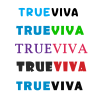Freelance Tips for Landscape Architecture Projects
Landscape architecture is a dynamic and creative field where freelancers can showcase their design skills while helping clients create functional, aesthetic, and sustainable outdoor spaces. From residential gardens and urban parks to commercial landscapes, freelance landscape architects face unique opportunities and challenges. Success in this domain requires a balance of design creativity, technical expertise, project management skills, and client communication.
In this article on freelancerbridge, we will discuss actionable tips for freelance professionals working on landscape architecture projects. These insights will help you stand out in a competitive market, build strong client relationships, and deliver designs that blend functionality with beauty.
Long Description (1500 words):
1. Understanding Client Needs
The foundation of a successful landscape architecture project lies in understanding your client’s vision. Whether designing a private garden or a large commercial space, take time to ask detailed questions about preferences, goals, and expectations.
Conduct initial surveys or consultations.
Understand the purpose of the space (aesthetic appeal, relaxation, community gathering, etc.).
Identify specific design styles clients prefer (modern, traditional, minimalist, sustainable, etc.).
By building a clear understanding of the client’s requirements, you avoid miscommunication and create designs that align with their lifestyle and vision.
2. Conducting Site Analysis
A professional landscape architect always begins with a detailed site analysis. This involves studying the physical and environmental conditions of the location.
Evaluate soil type and quality.
Analyze climate and weather patterns.
Consider drainage and water availability.
Assess existing vegetation and natural features.
This step ensures that your design is both practical and sustainable. For instance, knowing the soil quality helps you select plants that will thrive, while drainage analysis prevents future issues with flooding or waterlogging.
3. Incorporating Sustainability
Clients today value sustainable designs that conserve resources while enhancing aesthetics. As a freelancer, adopting eco-friendly practices can set you apart. Some strategies include:
Using native plants that require less water and maintenance.
Installing rainwater harvesting systems.
Incorporating energy-efficient outdoor lighting.
Designing permeable pavements to reduce runoff.
Sustainability not only appeals to eco-conscious clients but also demonstrates your commitment to responsible design.
4. Creating Detailed Mood Boards and Concept Plans
Visual presentation is essential in winning client approval. Mood boards help you showcase the overall vibe and design direction of the project. Combine colors, textures, plant choices, furniture, and lighting options to communicate your vision clearly.
Use digital tools like Photoshop, Canva, or Pinterest boards.
Include sketches and 3D visualizations when possible.
Provide alternative options to let clients choose their preferred style.
This approach makes clients feel engaged in the creative process and increases their trust in your expertise.
5. Choosing the Right Tools and Software
Technology plays a huge role in freelance landscape architecture projects. Modern design software allows freelancers to create accurate, professional, and visually stunning plans. Popular tools include:
AutoCAD – for detailed technical drawings.
SketchUp – for 3D modeling and visualizations.
Lumion – for realistic rendering.
GIS Tools – for analyzing topography and site conditions.
Investing time in learning and mastering these tools improves efficiency and ensures that your projects look polished and professional.
6. Balancing Aesthetics with Functionality
While beauty is important, every outdoor space should serve a practical purpose. Balance functionality with aesthetics by considering:
Seating arrangements for relaxation or gatherings.
Pathways that provide easy access and movement.
Lighting for safety and ambiance.
Space for children, pets, or community activities.
This balanced approach ensures that your designs are not only visually appealing but also improve the quality of life for the users.
7. Managing Budgets Effectively
As a freelancer, you must handle budgeting carefully to ensure profitability while keeping clients satisfied.
Be transparent about costs from the beginning.
Provide detailed cost breakdowns for materials, labor, and design services.
Suggest affordable alternatives without compromising quality.
Track expenses using freelance finance tools like Bonsai or FreshBooks.
Good budget management builds trust and ensures that projects are delivered without financial surprises.
8. Building Strong Client Relationships
Your success as a freelance landscape architect relies heavily on how you manage client relationships.
Communicate regularly with progress updates.
Be open to feedback and revisions.
Set realistic expectations regarding timelines and costs.
Deliver designs on time to establish credibility.
A positive relationship not only leads to repeat work but also generates valuable referrals.
9. Collaborating with Contractors and Vendors
Many landscape projects require collaboration with contractors, gardeners, or suppliers. Strong collaboration ensures smooth execution of your designs.
Build a reliable network of contractors.
Work closely with suppliers for high-quality and cost-effective materials.
Oversee construction to ensure the design vision is executed properly.
Collaboration skills also make you more efficient and allow you to handle larger, more complex projects.
10. Marketing Your Freelance Landscape Architecture Services
In today’s competitive environment, marketing yourself effectively is just as important as design skills.
Create a professional portfolio showcasing your best projects.
Use social media platforms like Instagram, LinkedIn, and Pinterest to share your work.
Start a blog (like freelancerbridge) to share design tips and attract organic traffic.
Network with architects, real estate developers, and property managers.
Strong marketing ensures consistent client flow and establishes you as an expert in the freelance landscape architecture industry.
11. Staying Updated with Industry Trends
Landscape architecture trends are constantly evolving. Staying updated ensures that your designs remain modern and relevant.
Research emerging styles like biophilic design, vertical gardens, and smart irrigation.
Attend industry events, webinars, or online courses.
Join professional communities to exchange knowledge with peers.
Being informed about new ideas helps you offer innovative solutions to your clients.
Conclusion
Freelance landscape architecture projects demand creativity, technical knowledge, and strong client management skills. By focusing on site analysis, sustainable practices, budget management, and marketing, you can position yourself as a trusted professional in the field. Remember, every project is an opportunity to showcase your expertise and build long-term success.
As part of freelancerbridge, we encourage freelancers to adopt these tips to deliver exceptional landscape architecture projects and grow in this rewarding industry.


 by Emily
by Emily



